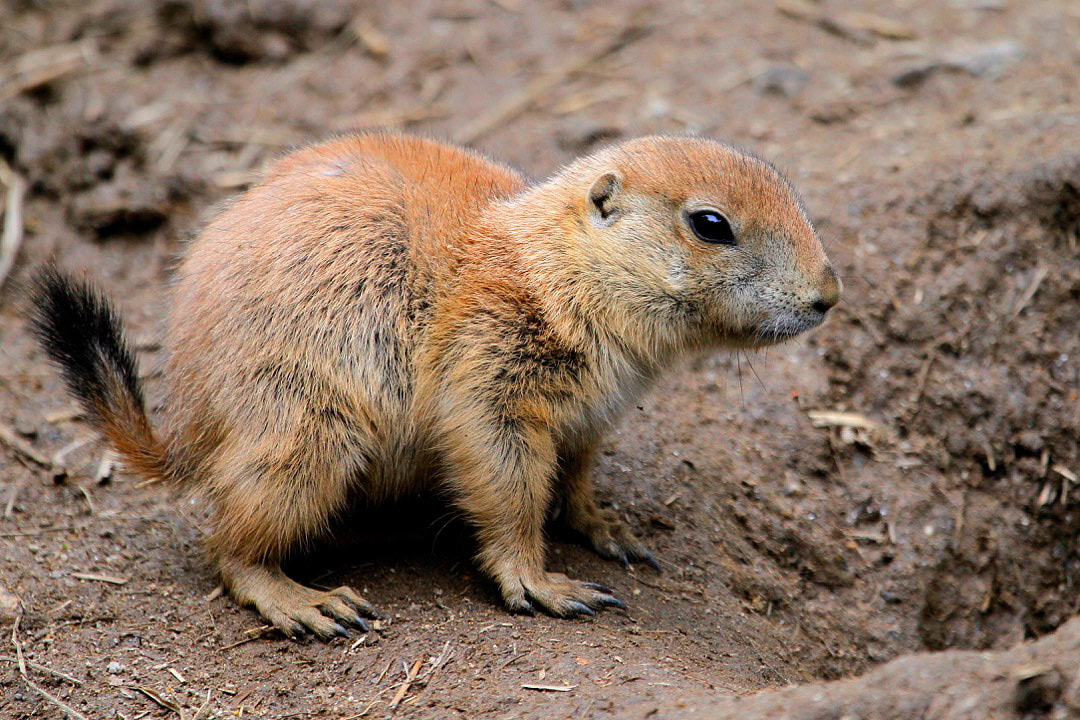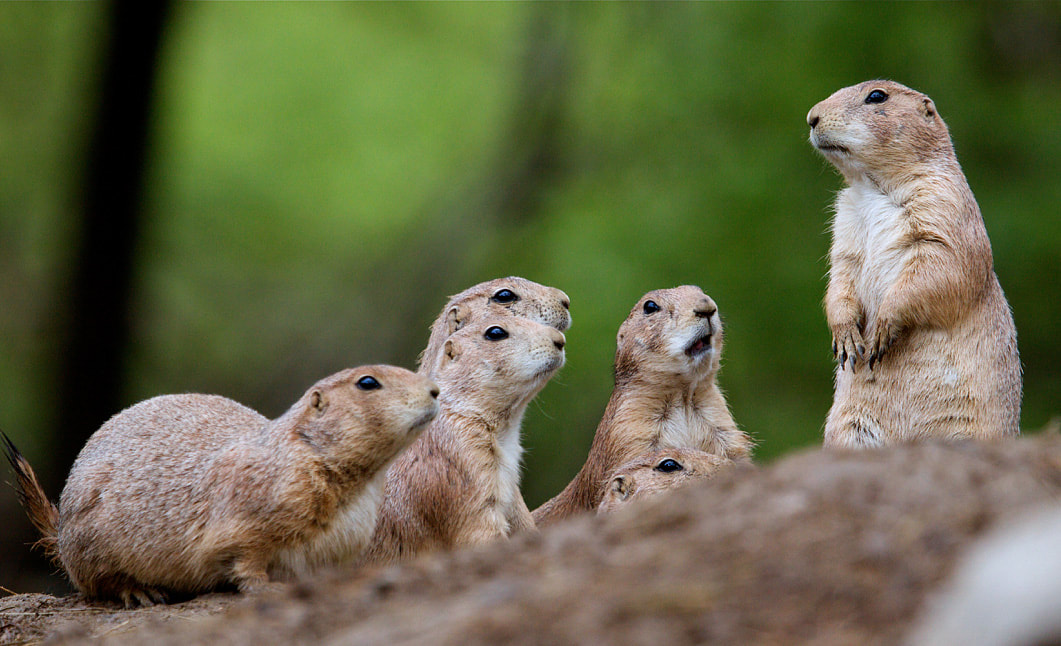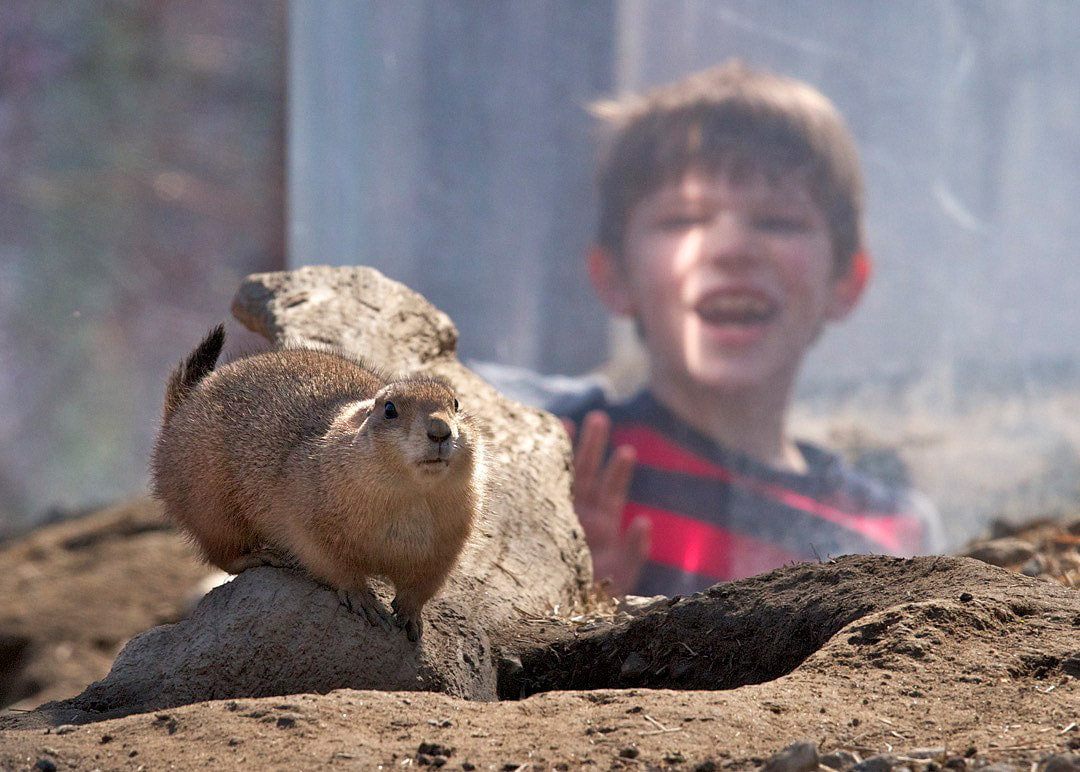Black-Tailed Prairie Dog (Cynomys ludovicianus)
|
Physical Description: Black-Tailed Prairie Dogs are robust rodents that are 14 to 17 inches long. They weigh 2 to 3 pounds. They have broad, rounded heads, small ears, large black eyes, hairy tails and short legs. They are brown in color, with darker ears and a pale buff to whitish belly. The tip of their tail is black.
Habitat: They live in short and medium grass prairies and plateaus. Range: They are native to the central North America from Texas in the United States, north to the Canadian border. Diet: Black-Tailed Prairie Dogs are primarily herbivores, feeding mostly on grasses, roots, weeds, herbs, and blossoms, however they will occasionally eat insects. All their water comes from their food. Lifespan: They live 4-8 years in the wild and up to 10 years in human care. Social Structure: Prairie dogs have an intricate social system composed of one male and several close-kin females and their offspring. Populations vary from 5 to 35 per acre. The largest prairie dog colony ever recorded spanned over 25,000 square miles and was home to an estimated 400 million prairie dogs. Black-Tailed Prairie dog towns have different rooms in their burrows for nurseries, for eating, sleeping, and even for bathrooms. Mating generally occurs in late January, with the young being born in March and April. Females give birth to one litter a year, usually 3 to 5 pups, but sometimes as many as 8. Both parents care for the young, but the majority of the care is done by the female while the male focuses on security. The pups are blind and hairless. Their eyes don’t open for 33 to 37 days. At 6 weeks they begin to appear above ground and are ready to be weaned. Once the pups have emerged above ground, they will nurse and be accepted by any lactating female. Status: Least Concern Other: One of the most popular habitats at Connecticut Beardsley’s Zoo is the Black-Tailed Prairie Dog habitat. These delightful rodents roam around their habitat freely and dig tunnels and burrows just as they would in the wild. When Black-Tailed Prairie Dogs sense danger, the sentinel Black-Tailed Prairie Dog gives a two-syllable sharp, warning bark, bobs up and down, calls again, and then quickly disappears in its burrow. Other Black-Tailed Prairie Dogs farther from the danger zone watch, and if the predator gets close will repeat the warning call. Black-Tailed Prairie Dogs dig burrows with tunnels leading to chambers for denning, storage, and nesting. The entrance holes are funnel-shaped and lead down steep tunnels 15 or 16 feet before leveling off for another 20 to 50 feet. They are primarily crepuscular, meaning they are active at dusk and dawn during warmer months. Black-Tailed Prairie Dogs spend most hot summer days sleeping and are active above ground in the morning and evening. In cool or overcast weather, Black-Tailed Prairie Dogs may remain above ground all day. They emerge shortly after sunrise and return to the burrow around sunset. Rain will often drive them to retreat underground. 1 https://www.iucnredlist.org/species/6091/115080297 |









